Seven Questions Over Breakfast with Rafael López
 November 23rd, 2011 by jules
November 23rd, 2011 by jules
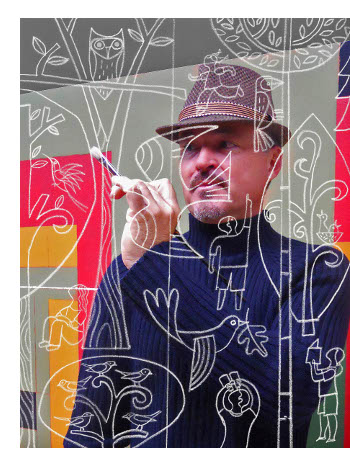 Remember this early March post here at 7-Imp? That’s still one of my favorite books of the year, Samantha R. Vamos’ The Cazuela That the Farm Maiden Stirred (Charlesbridge, February 2011), illustrated by my visitor today, Rafael López.
Remember this early March post here at 7-Imp? That’s still one of my favorite books of the year, Samantha R. Vamos’ The Cazuela That the Farm Maiden Stirred (Charlesbridge, February 2011), illustrated by my visitor today, Rafael López.
Rafael received the 2010 Pura Belpré Illustrator Award for Pat Mora’s Book Fiesta! and is also the recipient of two Américas Book Awards and a 2006 Pura Belpré Honor. Many of López’s stylized folk-art-style paintings, acrylics on wood, are brimming with joy, as you can see below. (López sent a whole heapin’ ton of art for today’s breakfast, which is how you win over this blogger.) Colorful, bright, bold, evocative, and even “eye-filling” are words that have been used by reviewers to describe López’s art. “His sophisticated, multilayered textures create depth, give form and work together to create an image that is easily readable, humorous and harmonious,” Kirkus wrote about Cazuela.
Rafael has been involved in many other projects, which he describes below. And public librarians all over the nation, who engaged in summer reading programs this year, may recognize this poster artwork:

His choice for breakfast this morning? “Give me Mexican comfort food,” he says. “Chilaquiles. Cooked in tomatillo sauce with a side of nopales and strong cup of Oaxacan coffee with a cinammon stick dipped in it.”
He already had me at the Oaxacan coffee, but then he had to seal the deal in a most exciting way with that cinnamon stick. Let’s get right to it by getting the basics while we set the table for breakfast. I thank him for stopping by.
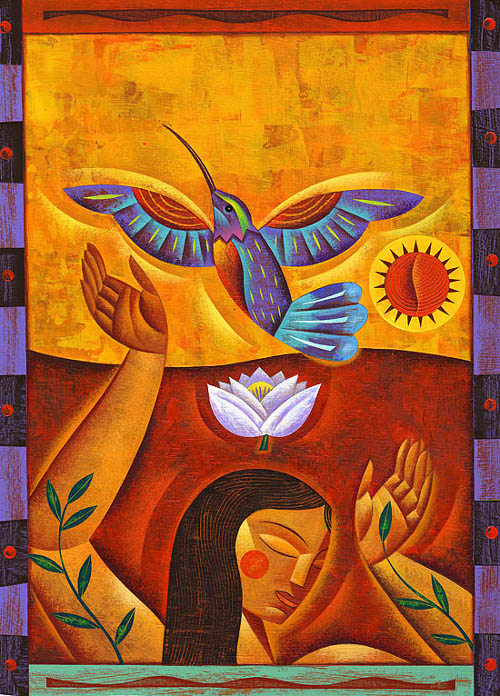
Jules: Are you an illustrator or author/illustrator?
Rafael: Illustrator.
(Click to enlarge)
Jules: Can you list your books-to-date?
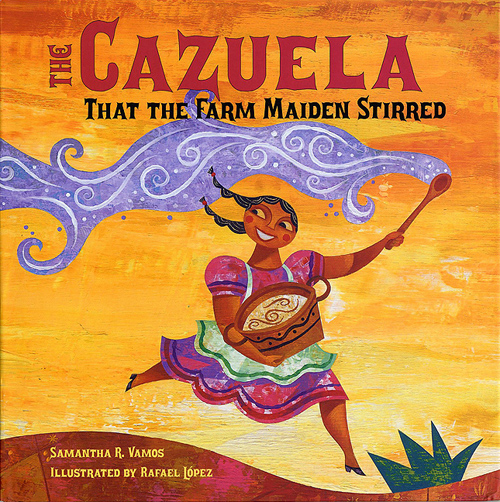
Rafael:
- My Name is Celia, written by Monica Brown
- Yum! MmMm! Que Rico! Americas’ Sproutings by Pat Mora
- Our California by Pam Muñoz Ryan
- Book Fiesta! by Pat Mora
- The Cazuela That the Farm Maiden Stirred by Samantha Vamos
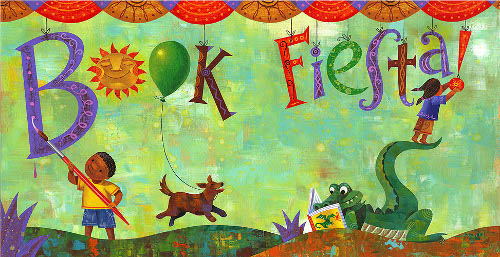

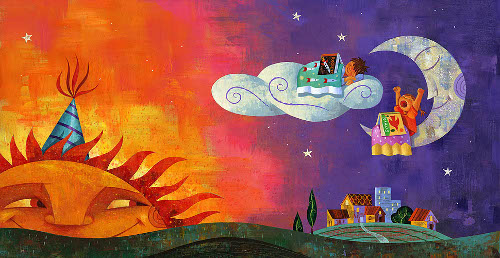
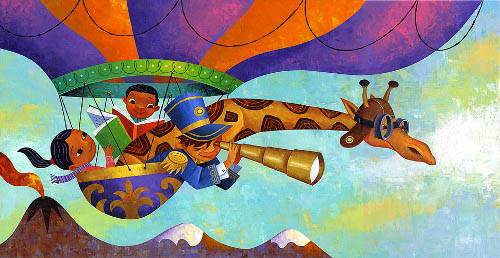
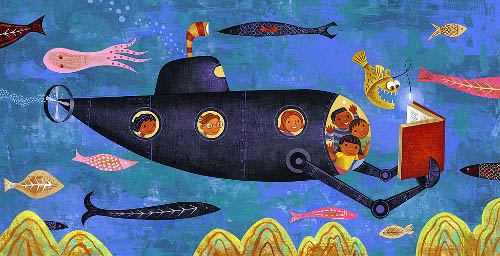

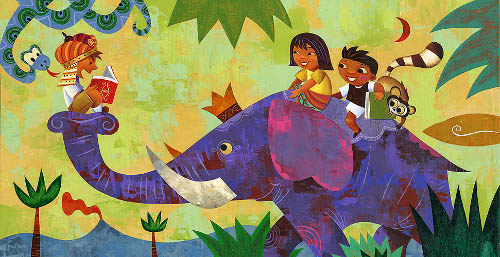

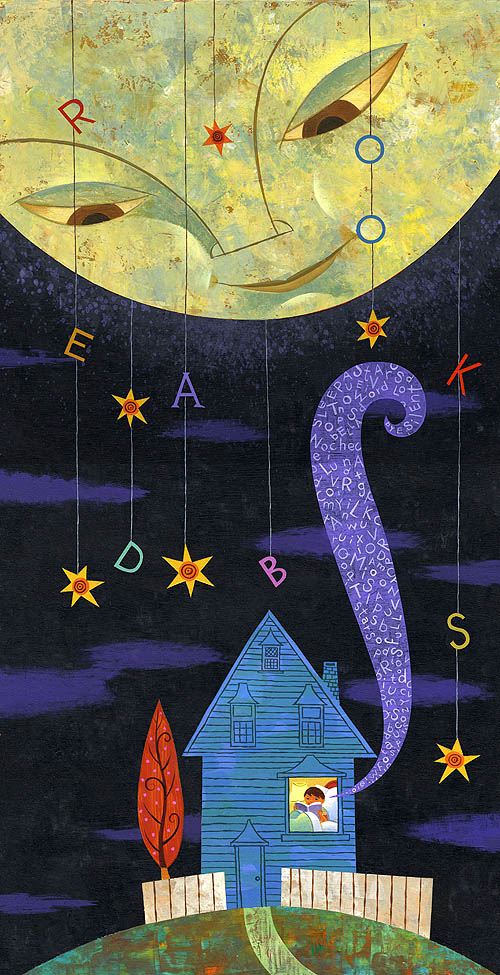
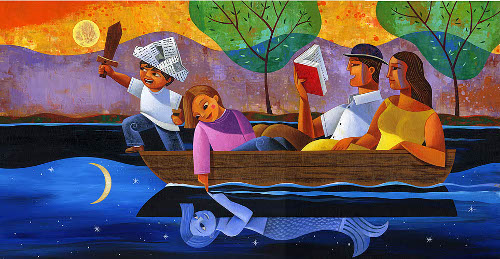
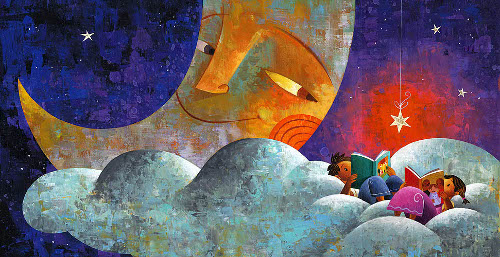
Jules: What is your usual medium, or––if you use a variety—your preferred one?
Rafael: I use Mexican acrylic color that come in big recycled salsa jars and paint on pieces of wood that I cut and sand till the texture and grain speaks to me.

Jules: Where are your stompin’ grounds?
Rafael: I live in an industrial loft in downtown San Diego and have a house on a hill in San Miguel de Allende, Mexico. It is a 16th century colonial town in the heart of my native country. I spend eight months in San Diego and four in San Miguel. When I am in one place, I long for the other. This duality helps me stay visually stimulated and keeps my wife happy, because she’s a Gemini.
(Click to enlarge)


Jules: Can you briefly tell me about your road to publication?
Rafael: A call out of the blue landed me my first book with a small publisher in Northern Arizona, called Luna Rising. They had followed my editorial work, and the Art Director thought I had the perfect style to create a book, called My Name is Celia. I thought she had the wrong phone number, because I had never done any children’s subjects prior to that, just devils, flames, and skeletons — you know, the stuff that makes Creative Directors feel a bit nervous. Thankfully, she was relentless, and I didn’t hang up the phone.

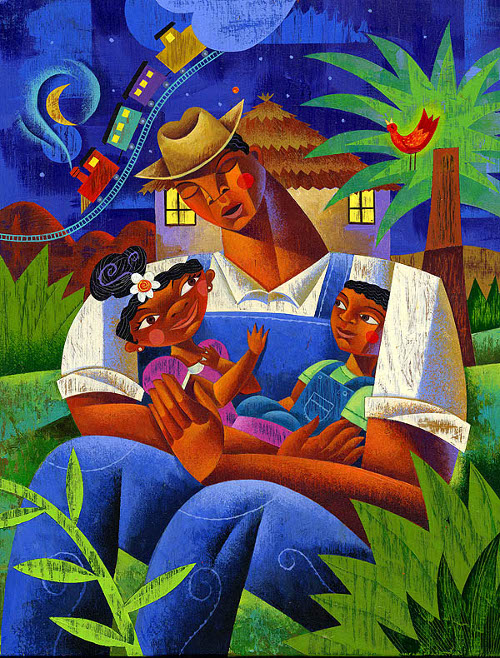
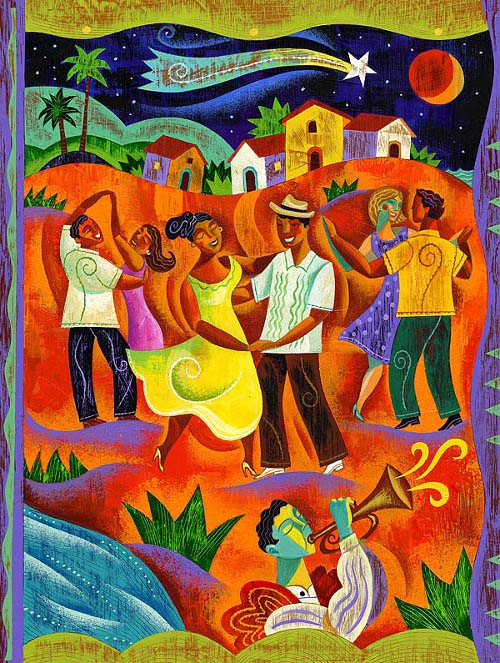

My Name is Celia
Jules: Can you please point readers to your web site and/or blog?
Rafael: www.rafaellopez.com, http://rafaellopezbooks.blogspot.com.
Samantha Vamos’s The Cazuela That the Farm Maiden Stirred
(Click to enlarge)
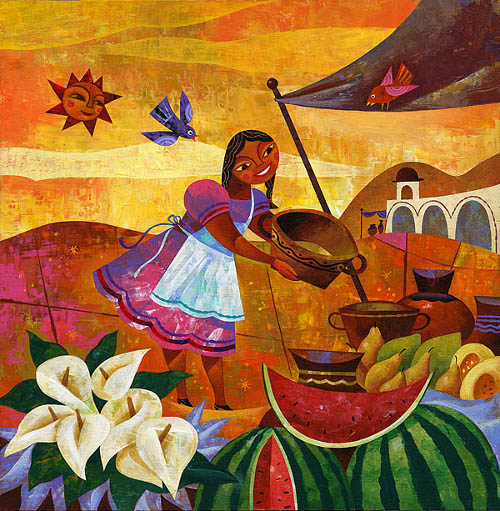
(Click to enlarge)
that the farm maiden stirred.”
(Click to enlarge)
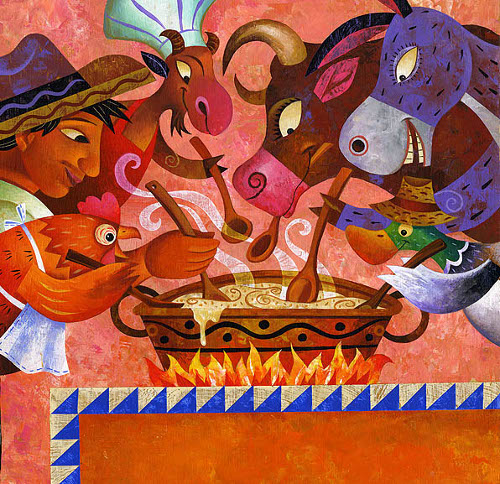
and farm maiden all stirred the CAZUELA one last time.”
(Click to enlarge)
Jules: If you do school visits, tell me what they’re like.
Rafael: I’m passionate about working with kids, teachers, and librarians. We tell stories, paint murals, and do workshops where we play drawing and painting games and talk a lot about color. These encounters are quirky, unpredictable, and just plain magic. I know how lucky I am to paint for kids, and I want my illustrations to inspire and challenge them. Children are more likely to trust their emotions and respond with fresh eyes, and I find myself constantly challenged to spend time trying to think the way they do. I have spent the last decade painting many murals with children and developed a bold graphic style that is like a giant paint by numbers. The results are amazing, and it’s thrilling for little hands to create something so big.
the Fort Collins, Colorado, community
When I am painting murals, I connect to my Mexican heritage and I want to involve kids and the community in this process. With so many educational cutbacks, there aren’t enough opportunities for children, families, and teachers to make art. I like to come in and craft that experience, hopefully creating a lasting memory, pride, and excitement in their work.
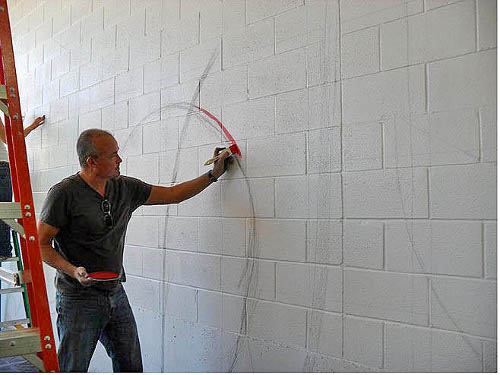
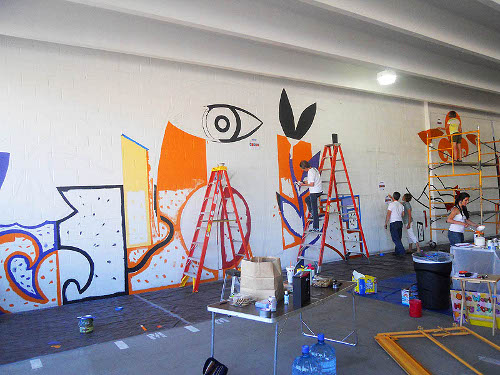
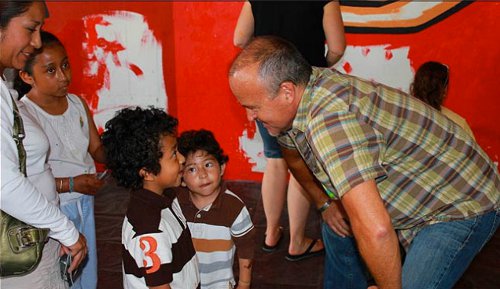
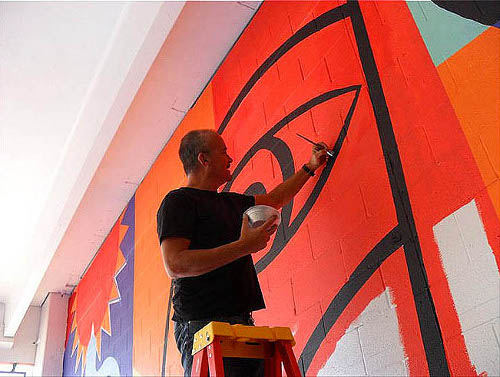


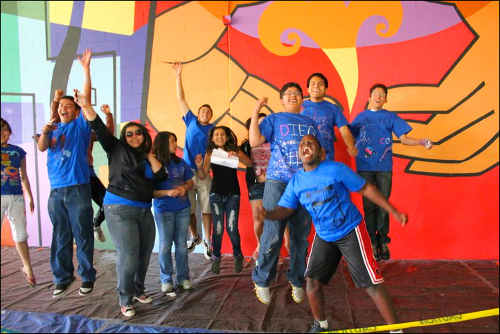
Jules: If you teach illustration, by chance, tell me how that influences your work as an illustrator.
Rafael: I’m involved with the Link program that teaches illustration to at-risk high school students. I’ve also taught workshops at high schools and illustration for the Art Center at Night program. I’m interested in teaching more than technique but want to help students discover their voice, vision, and viewpoint. It matters more to me that their work comes from within than helping them become proficient in techniques. What’s inside the mind is far more interesting and can be expressed in many forms. Their innovative ideas are a constant reminder to continue to experiment, to not settle for what is comfortable, to stay fresh and daring, regardless of your age.

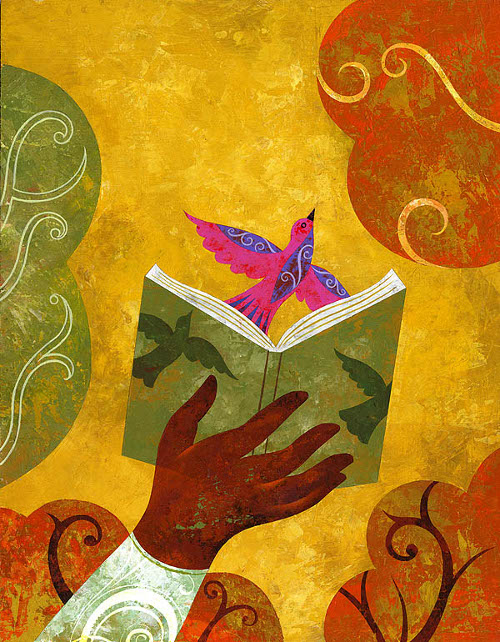
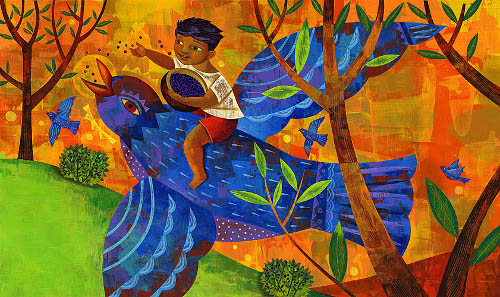
Jules: Any new titles/projects you might be working on now that you can tell me about?
Rafael: I’m currently finishing up a new book, My Name is Tito, written by my friend, Monica Brown. I worked with her on my first book, My Name is Celia, about the late great singer, Celia Cruz. I’m excited about this book, as this year I created a set of five Latin Music Legends stamps that were released by the United States Postal Service.

I feel like I’ve spent the last two years with Celia Cruz, Carlos Gardel, Carmen Miranda, Selena, and Tito. Now I’ve got the chance to tell Tito’s life story to children, and I’m having fun. It’s also a great excuse to listen to salsa music and stay in shape while painting.
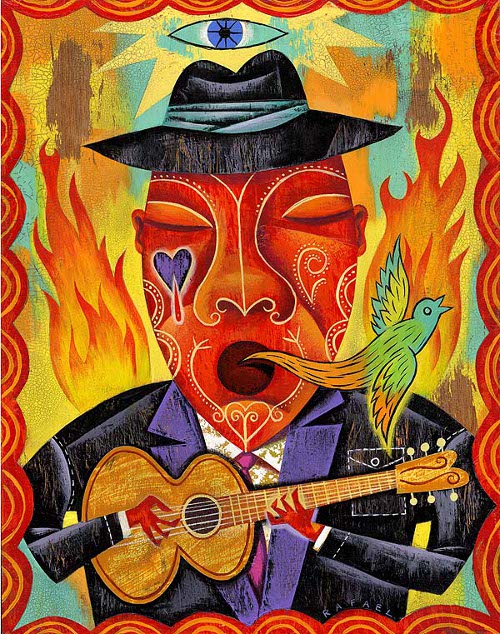
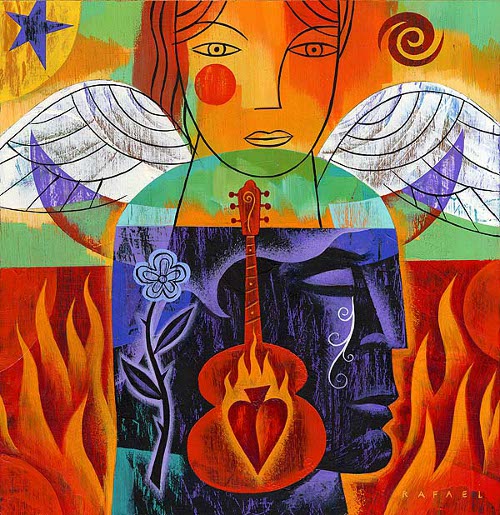
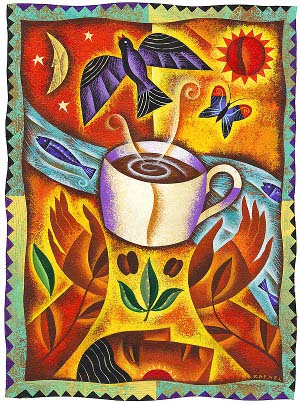 Jules: Now, normally right here I have a picture of a simple, white coffee mug. Today, though, is Rafael’s Morning Coffee, pictured left. We’re going to indulge in some of that, since the table’s set now for six questions over breakfast. Let’s get a bit more detailed, and I thank Rafael again for visiting 7-Imp.
Jules: Now, normally right here I have a picture of a simple, white coffee mug. Today, though, is Rafael’s Morning Coffee, pictured left. We’re going to indulge in some of that, since the table’s set now for six questions over breakfast. Let’s get a bit more detailed, and I thank Rafael again for visiting 7-Imp.
1. What exactly is your process when you are illustrating a book? You can start wherever you’d like when answering: getting initial ideas, starting to illustrate, or even what it’s like under deadline, etc. Do you outline a great deal of the book before you illustrate or just let your muse lead you on and see where you end up?
Rafael: After the panic of saying yes to the project settles, I give myself time to digest the story and start the visual research. Fortunately, this also involves musical research, as in the books of Celia Cruz and Tito Puente.
My second stage is to roam the library and bookstores and look at children’s books from a distance and see which books visually grab my attention and compel me to pick them up. This is a very important stage, because I want every piece to stand on its own but [all to] work as a group to seamlessly tell a story. I see too many books where the illustrations are far too realistic, 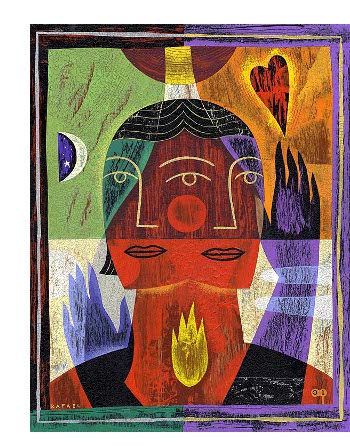 and I always wonder why. I believe it is important to give credit to the imagination of kids and not bring them a story in such a literal way. Children’s books are a great opportunity to express a more personal style, and those are the books that really speak to me. I’m always walking around and thinking, how would this feel if I were a kid?
and I always wonder why. I believe it is important to give credit to the imagination of kids and not bring them a story in such a literal way. Children’s books are a great opportunity to express a more personal style, and those are the books that really speak to me. I’m always walking around and thinking, how would this feel if I were a kid?
I take an intuitive approach and begin creating the story with pencil sketches. I value these sketches and work to improve them with several revisions. Quite often, I send final paintings with additional elements that the designer never saw. I’m fortunate that they appreciate the additional efforts to make them more special.
My approach to color is also very instinctual. I have a general idea where the painting will end up, but I never give the art director a color sketch, because I feel it might restrict me six months later when I come up with an even better color solution. Giving birth to a book takes about as long as an elephant calf, sometimes 18 to 22 months from the initial reading of the script to delivering the final paintings. The process of creating a book should stay flexible and continue to evolve during the creation of the paintings to keep it fresh.
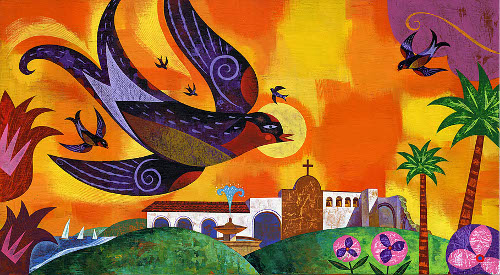
I’m constantly searching for visual clues. My process begins by wandering the urban landscape of the city or winding cobblestone streets of my native country with a camera. I catalogue the colors and rich textural history of well-worn doors, layers of peeling posters and paint. If you look closely, you can hear their stories in my work. The skies, backgrounds, or the surface of the skin of a whale in my books reveal secrets of places where I have been.
I buy vivid paints from a little tiendita in San Miguel de Allende. There is no chromophobia in Mexico, so it is the ideal place to shop for the essential ingredients of my paintings. The force of these intense colors is like tasting chiles, and I’ve learned to blend colors like salsa in different combinations to achieve the desired result.
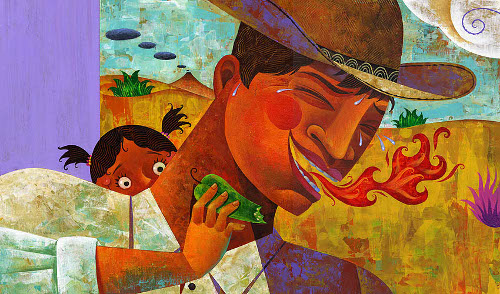
For the past twenty years, I’ve been painting on pieces of wood. There are tactile emotions associated with selecting just the right piece, hand-sanding it and letting those textures guide me.
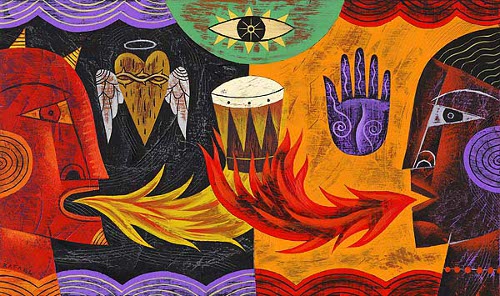
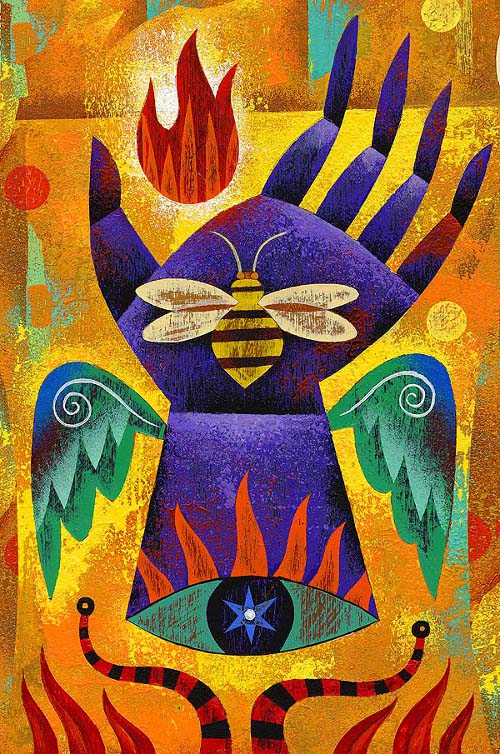

When I receive a story, I make word lists of key themes or search for poetic parts to post on my wall. I am fueled by the author’s words but don’t want to mirror the text verbatim. For this reason, I have always searched for symbols to represent the emotions or spirit of the text. An example in the book My Name is Celia is a red bird that is a metaphor for joy.
I am passionate about travel and am inspired by indigenous groups, because they synthesize the important traits of living things in a simple, direct way. Children are way too smart, and they don’t need us adults to remind them about the shape of a dog or that the grass is green. There is no need for watered-down colors or realism. I want to communicate on that magical level that captures their imagination. I run or walk each morning, and on the way I gather rocks, shells, leaves and document found objects and textures that inspire me and then bring them into my studio.

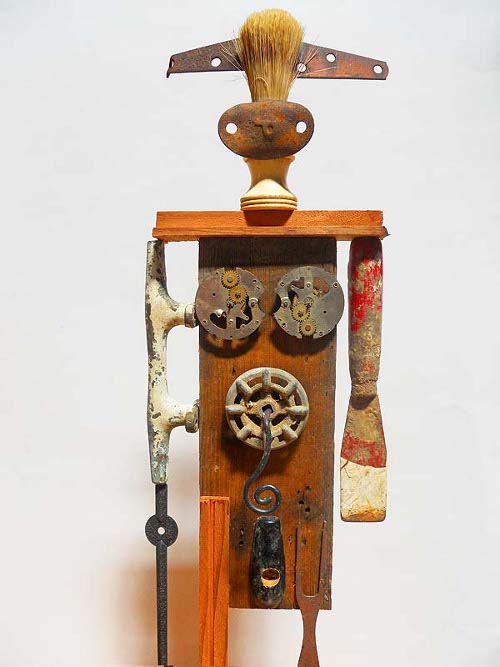
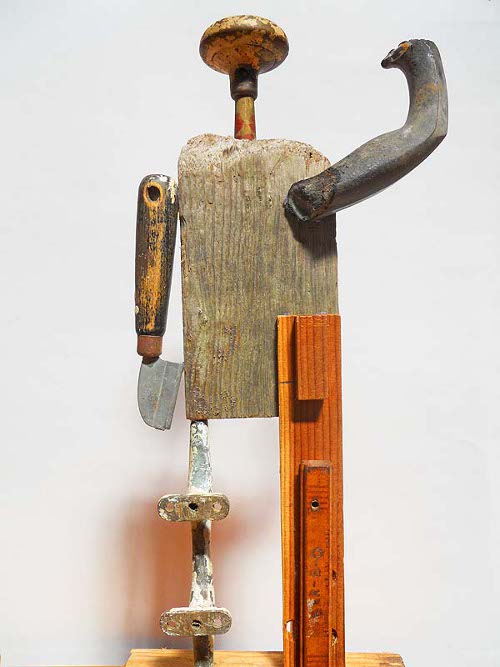
I make mood boards for my books, and these collages help me to channel the right spirit for my paintings. I’m looking for more than a visual likeness of my subjects but exploring patterns, decorations, clothing or the way an animal moves, a person dances or makes music — like Tito beating his timbales. I believe everything has a personality, if you work to find it. Character development is essential, and it all begins with sketching to get the right spirit for each person, animal, and object. To get it right, you have to make boatloads of sketches and put pencil to paper. I start with gestural sketches to make major decisions about where elements should go. In this phase of drawing, I consider the direction of things and use arrows and scale to create a focal point. Then I refine my drawings to evolve the character using references on my mood board to create details.
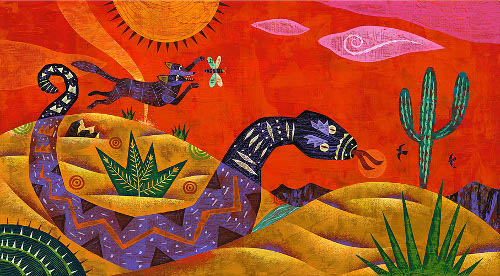
I always make a miniature book that includes all my drawings, as I want to see the flow of the story and look for inconsistencies in the visual storytelling. The next step is to prepare my boards with a surface that will receive the carbon and transfer my sketches from tracing tissue to the wooden boards. I like to mask things with tape, so I can paint selected areas of my composition. Surrounded by the photographic references of colors and textures I’ve explored, I apply colors to the board randomly and in an intuitive way. I then use spatulas, pottery tools, shells, and twigs to scrape the wood and reveal secrets of the surface texture. I keep painting with a variety of brushes to bring in the details and bring visual flavor, color, and texture to the story.
2. Jules: Describe your studio or usual work space.
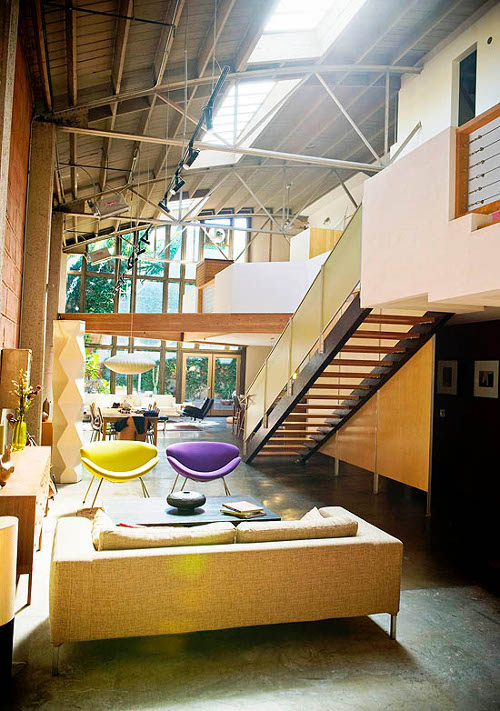
Rafael: My walls are full of visual cues. I’m a scavenger and pick up things, including natural and found objects, as well as images that have no relation to what I am working on. I like to build robots and other characters out of some of the the stuff I find and put them in my space. Some images have been up there for many years and are yellowed, but my instinct tells me to not take them down till I find a use for them. At the right moment, I’ve found these visuals often trigger a direction, and then I can move on.
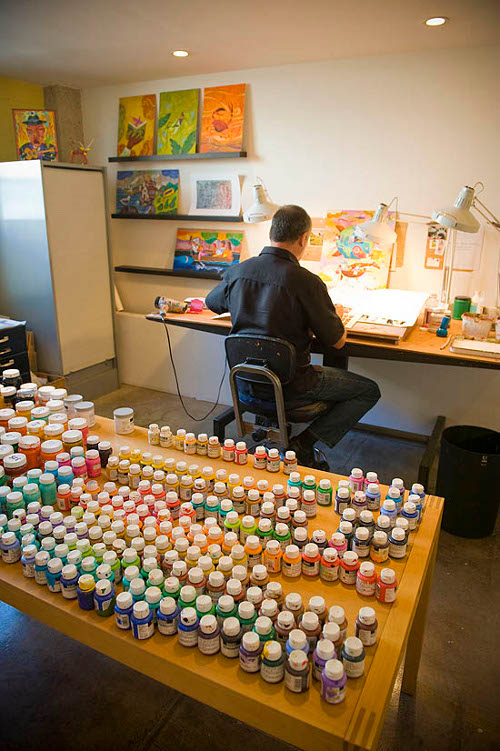
 In 1997, we bought an old car garage, built in 1929, in the East Village of downtown San Diego. With the help of a close friend, we renovated it into a live/work studio. I collect mid-century modern furniture but have eclectic taste. I’ve got a Jean Prouve knock-off table that is covered from end to end with large jars of color. A friend built it for me with no corner legs — just a central column on wheels. I can easily swing my stool and grab whatever color is calling my name. I keep the telephone and computers far away up on the second floor.
In 1997, we bought an old car garage, built in 1929, in the East Village of downtown San Diego. With the help of a close friend, we renovated it into a live/work studio. I collect mid-century modern furniture but have eclectic taste. I’ve got a Jean Prouve knock-off table that is covered from end to end with large jars of color. A friend built it for me with no corner legs — just a central column on wheels. I can easily swing my stool and grab whatever color is calling my name. I keep the telephone and computers far away up on the second floor. 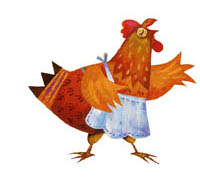 It’s a 3,200 square-foot loft that is long like a bowling alley, so I can’t get there on time to pick up the phone or get distracted by email. In this way I can control things that might zap my energy or the flow of painting. I also collect pottery and put some of my favorite brushes and tools in there. I have a handcrafted bookshelf where I keep treasured books and objects that I refer to when creating. My trusty old hairdryer is retired there in a place of honor on the top shelf, covered in colored streaks from past paintings. I created a sliding translucent door that I can open and close to keep the flexible open layout, but shut for privacy.
It’s a 3,200 square-foot loft that is long like a bowling alley, so I can’t get there on time to pick up the phone or get distracted by email. In this way I can control things that might zap my energy or the flow of painting. I also collect pottery and put some of my favorite brushes and tools in there. I have a handcrafted bookshelf where I keep treasured books and objects that I refer to when creating. My trusty old hairdryer is retired there in a place of honor on the top shelf, covered in colored streaks from past paintings. I created a sliding translucent door that I can open and close to keep the flexible open layout, but shut for privacy.
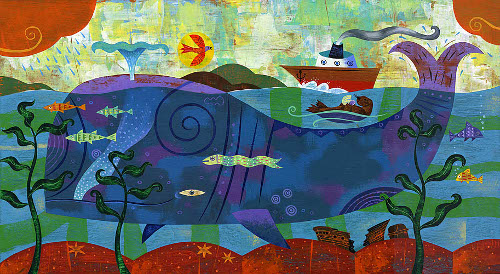
To accomplish seclusion in my studio in San Miguel de Allende I set it up in basement of our house, it’s a cave really that used to be the laundry room. There’s comfortable furniture with bright pillows and a deep sink in this space adjacent to the garage. One time I was cleaning my brushes, and a small garden snake, who had slipped in the garage, was trapped on some masking tape in the trashcan. My son and I gave it a little water, and it was on its way.
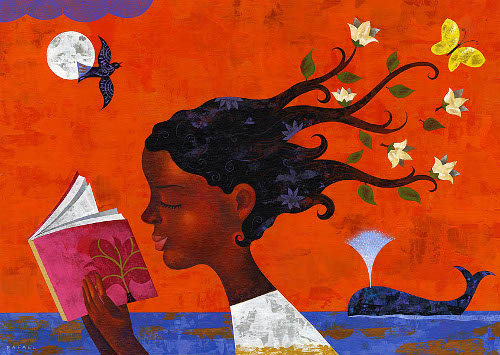


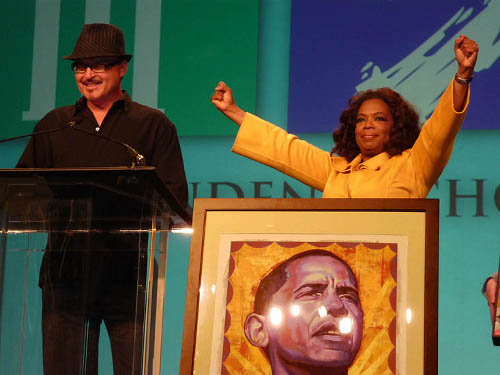
South Africa and presented them to her at the Chicago conference for the
National Association for Independent Schools.
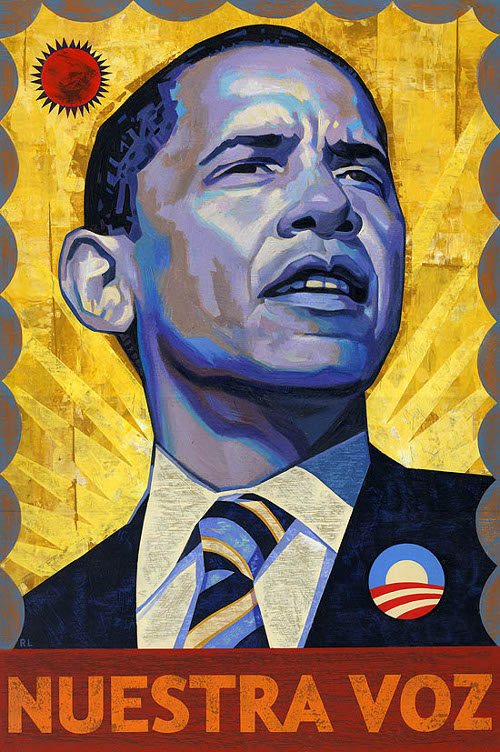
official poster at Artists for Obama
3. Jules: As a book lover, it interests me: What books or authors and/or illustrators influenced you as an early reader?
Rafael: When I was ten, my architect parents sent me from Mexico City to live on a communal farm in Exeter, England, with a conceptual and performance artist named Felipe Ehrenberg. It was there that I discovered Tintin books, and—even though they were in French—it was clear that these were pretty cool stories of mystery and adventure.
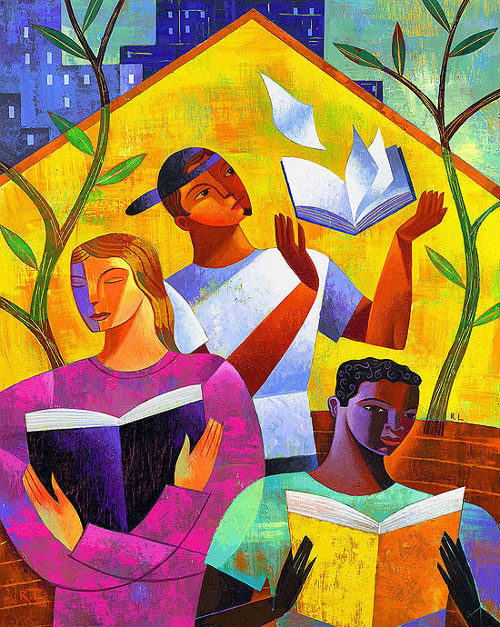
4. Jules: If you could have three authors or illustrators—whom you have not yet met—over for coffee or a glass of rich, red wine, whom would you choose?
Rafael: Leo Lionni (his graphic simplicity), Charley Harper (visual geometric poetry and can make the most mundane subject look extraordinary), and Roald Dahl, who inspires and wisely guides me with words like these: “Above all, watch with glittering eyes the whole world around you, because the greatest secrets are always hidden in the most unlikely places. Those who don’t believe in magic will never find it.”
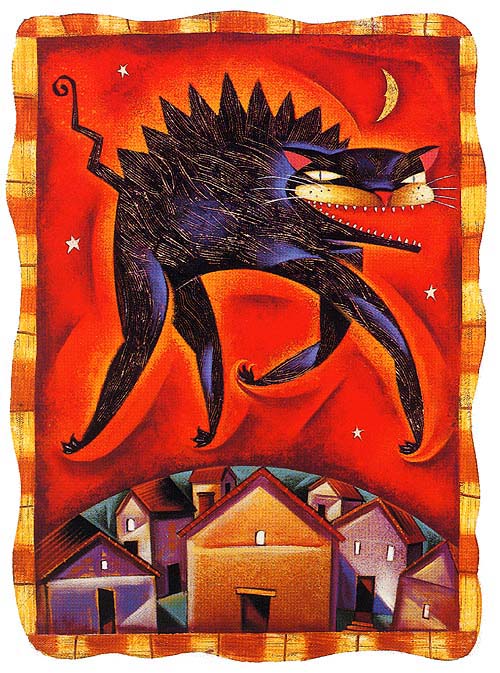

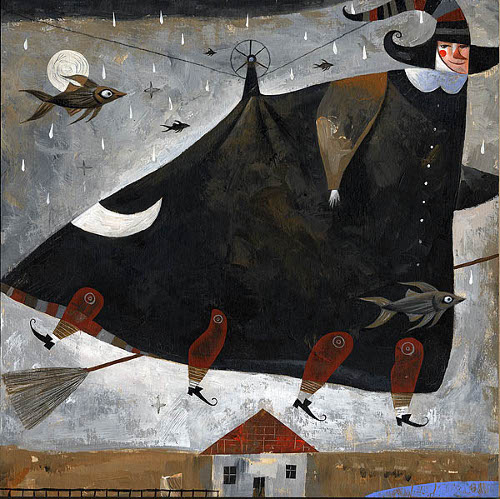
5. Jules: What is currently in rotation on your iPod or loaded in your CD player? Do you listen to music while you create books?

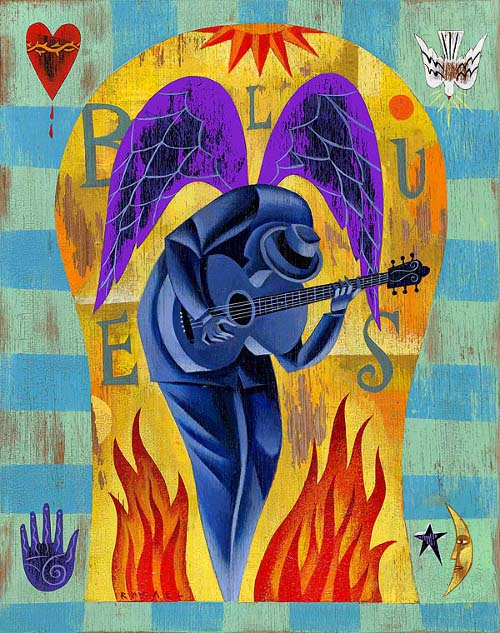
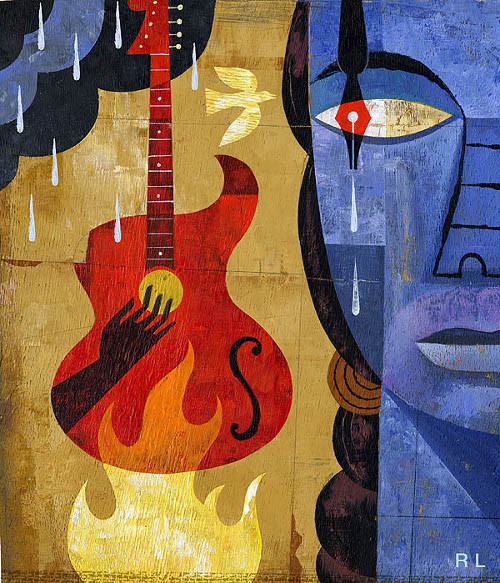
Rafael: I can’t imagine drawing or painting without music. I like many different genres and artists from around the world. I update my playlists constantly, depending on my mood or project. Once in a while, I hear a song my son uploaded without me knowing, like the theme song from Up or Fantastic Mr. Fox.
One of my closest friends, Gil Gutiérrez, is a virtuoso guitarist, who hails from Oaxaca. He not only plays awesome interpretations, but composes some extraordinary stuff as well. I have played the guitar since I was five, but when I heard him play, I considered hanging it up on the wall.
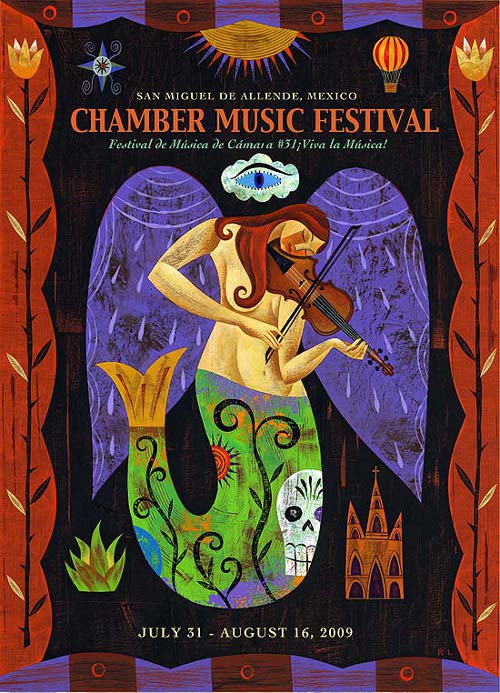
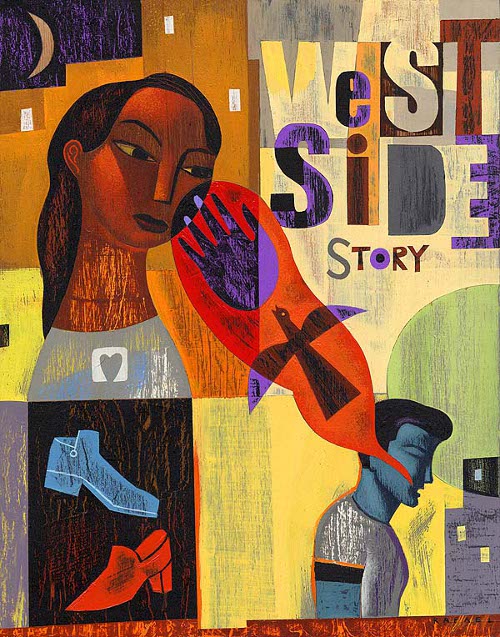
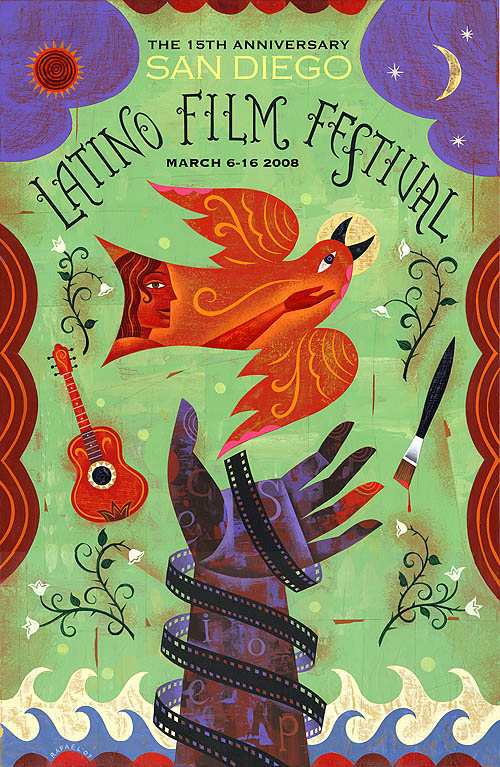
6. Jules: What’s one thing that most people don’t know about you?
Rafael: I’m the son of two idealists. My parents were both architects and professors, who knew Che Guevara and Fidel Castro in the late ’50s. My parents smuggled the young rebels in their Volkswagen Beetle out of Mexico City in disguises to a farm near Toluca, Mexico. It was there that Fidel and Che trained to return to Cuba and fight the Batista regime.
(Click to enlarge)
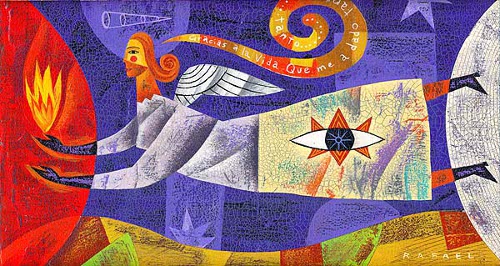

Jules: What is your favorite word?
Rafael: “Arisenarinaseas.” Not sure if I spelled that right, but my son says this all the time. I still don’t know what it means, but I don’t care.
Jules: What is your least favorite word?
Rafael: “Insipido.” In Spanish, this means a lack of color, texture, guts, flavor. It’s something half-cooked — with no spice, no commitment.
Jules: What turns you on creatively, spiritually or emotionally?
Rafael: World music, travel, color and texture, international cuisine, love, compassion, a humble spirit, the challenges my son faces with his learning disabilities.
Jules: What turns you off?
Rafael: Intolerance, paranoia, stereotyping, and fanatics.
Jules: What sound or noise do you love?
Rafael: A guitar riff, while sitting around the kitchen table in San Miguel de Allende.
Jules: What sound or noise do you hate?
Rafael: Car alarms and an endless parade of ambulance sirens in the East Village.
Jules: What profession other than your own would you like to attempt?
Rafael: Architect or professional musician.
Jules: What profession would you not like to do?
Rafael: Gun dealer.
Jules: If Heaven exists, what would you like to hear God say when you arrive at the Pearly Gates?
Rafael: “You’re just in time: The Latin jazz is still going on for another week.”

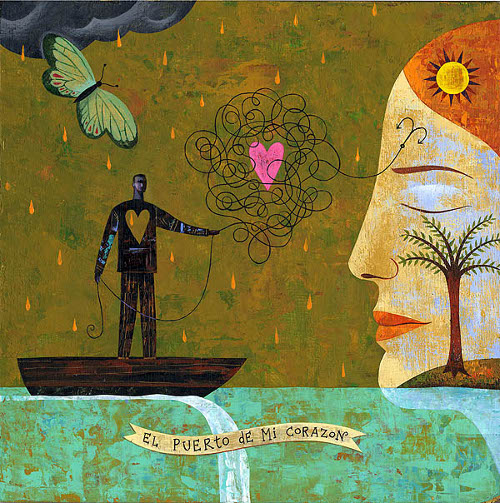

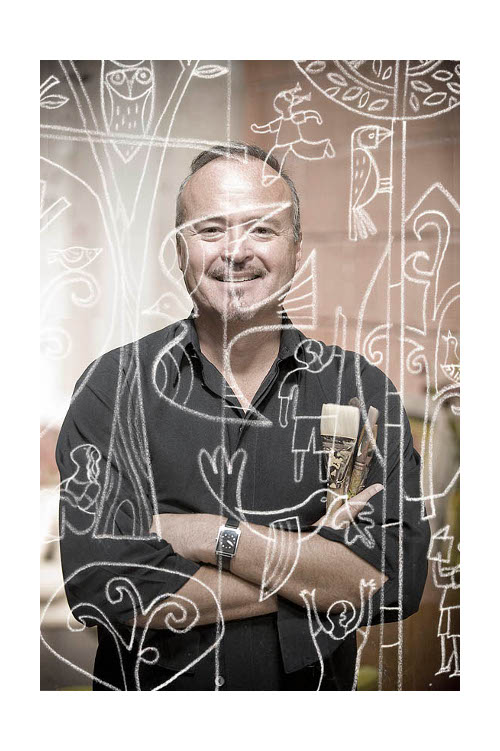
All artwork and images used with permission of Rafael López. All rights reserved.
The spiffy and slightly sinister gentleman introducing the Pivot Questionnaire is Alfred, © 2009 Matt Phelan.
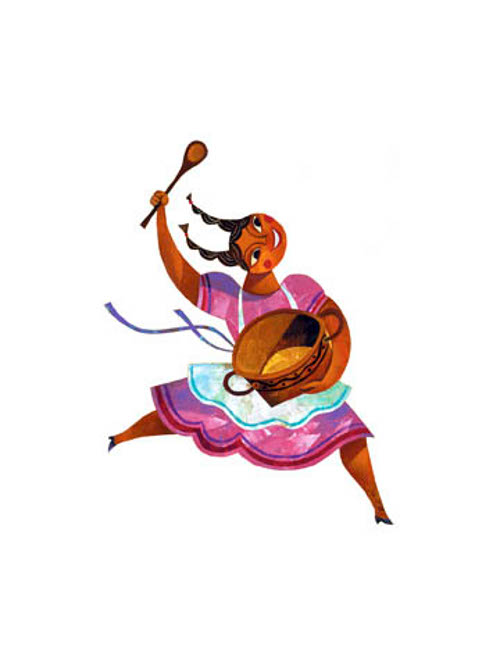

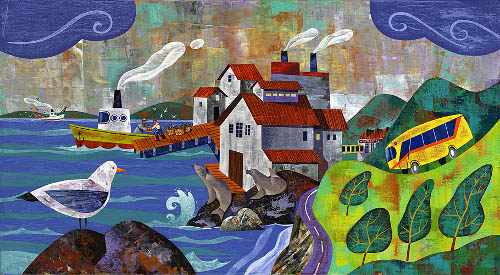

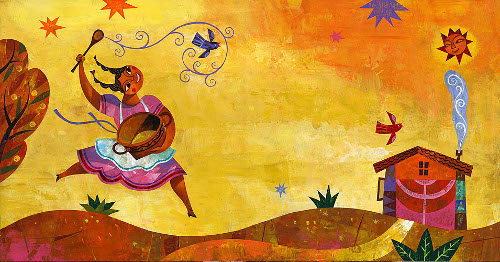
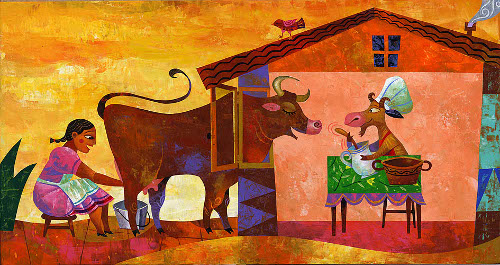
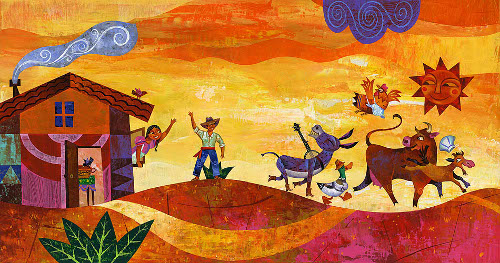
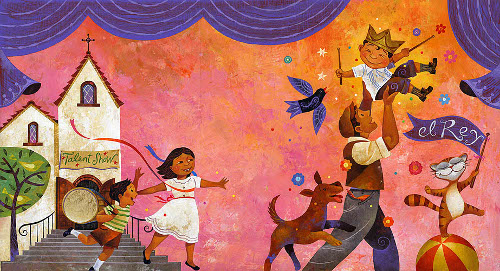
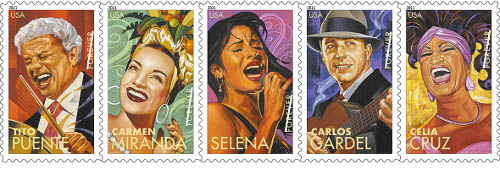
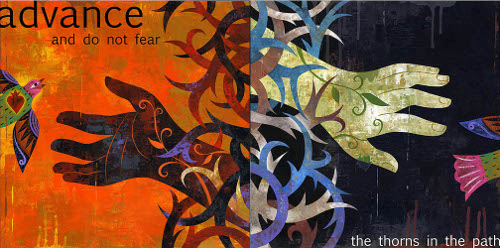

WOW! Rafael is amazing! I was fortunate to meet him and see some of his originals in person. They are gorgeous, and VIBRANT! Big big fan and excited to see him here.
What a visual feast! Thanks for sharing this joy…
I also had the privilege of meeting Rafael and witnessing one of his artist talks and painting demos. A phenomenal colorist (I hope that he would not find the term reductive) and consummate gentleman.
Wow. Truly an incredible array of illustrations!! I’m especially smitten with the Book Fiesta illustrations… that moon looking down at the house! SO beautiful!
Thanks, you all. RIGHT? RIGHT. You could just sit here ALL day and look at this art. I’m so grateful he sent so much for the interview.
And in many ways I think his art is very fitting for a week of thanksgiving.
Love seeing Rafael and his artistry here. He’s so unique and his work is remarkable. I always notice something new each time I examine his illustrations. I also love seeing photographs of his Fort Collins’ mural here, too. Wonderful review.
STUNNING!!!!! this is so much gorgeousness in one spot – wow!! thanks for this and wishing you have a wonderful Thanksgiving, Jules!
Awesome! Thanks for sharing this interview. Rafael is such a treat!!
Breathtaking color and talent. Makes me happy just looking.
OMG – I think this is my favorite post ever. I just ADORE Rafael’s work! THANK YOU for sharing!! 🙂 e
Another amazing interview full of inspirational art. Thank you for sharing, Jules. Happy Turkey Day!
What a remarkable interview this is…and absolutely inspiring artwork. I am delighted that I visited your amazing website yet again…..thanks to you and to Rafael for providing such a truly engaging and brilliant post.
I agree that Rafael is amazing! I am a new fan!
[…] I love all the art Rafael López shared at 7-Imp on Wednesday. He even gave me permission to use his sun on this page of the site, ’cause I […]
AN EYE EXPLOSION of the best sort – so much colour, life, magic. he also manages to use my favourite roald dahl quote, and introduce me to the word “chromophobia”. I think he may be my new art idol! 🙂
I would give “un ojo de mi cara” (an eye from my face) to have Rafael Lopez illustrate one of my works. Wonderful, wonderful work!
[…] Rafael López (November 23, 2011): “I’m passionate about working with kids, teachers, and librarians. We tell stories, paint […]
Rafael Lopez is amazing painter! His illustrations
are fantastic! His art is really an inspiration for all
upcoming illusrators !
[…] John Rocco (Caldecott Honor), who visited in May; Rafael López (Pura Belpré Illustrator Honor), who visited in November; Lane Smith (Caldecott Honor), who shared early sketches from Grandpa Green in September; Melissa […]
Great interview, love hearing about an illustrator’s process. Rafael’s illustrations are very much full of life and vibrancy!
Rafael Lopez has very unique style of illustration and colour.
tthis is appropriate guideline for newcomers.
What a fabulous interview, and a great blog. I’m so glad I discovered you.
he is brilliant with color and what I see is ” cada vez que Amo … Muero un poco mas –
[…] of her poetry in Spanish, Poesía eres tú (Santillana), and a book on the work of muralist Rafael López (Harcourt). I am working on a middle grade historical novel and always creating new poems and […]
brilliant colours, lively compositions……………simply beautiful work
MA _ RA _ VI _ LLO _ SO!!!!!! ame las ilustraciones!!!
[…] My 2011 “breakfast” interview with Rafael is one of my […]
[…] López(Click to enlarge) Last week over at Kirkus, I talked here with Margarita Engle and Rafael López about Drum Dream Girl: How One Girl’s Courage Changed Music (Houghton Mifflin Harcourt, March […]
[…] of book publishing is being introduced to many of my favorite current illustrators and authors. Rafael López, Yuyi Morales, David Díaz, Monica Brown, and Alma Flor Ada are a just a few that I have had the […]
[…] suns. (I think, in fact, for my birthday in May, I’ll get a tattoo of this sun pictured here. Rafael López created that sun and told me it was fine with him if I did. I think it was even his idea. Where on […]
[…] (Houghton Mifflin Harcourt, April 2016). The book is illustrated by award-winning artist Rafael López, but he is also the subject of the story. Based on a true story, it’s the tale of a girl, […]
[…] Mifflin Harcourt, April 2016). The book is illustrated by award-winning artist Rafael López, but he is also the subject of the story. Based on a true story, it’s the tale of a girl, named […]
[…] Seven Impossible Things Before Breakfast Interview with Rafael Lopez […]
Amazing!
[…] Sources: Illustrator website Illustrator interview : HarperKids Illustrator interview : Seven Impossible Things Before Breakfast […]
Extraordinario!!
I love sharing His work and life with my elementary art students of every background. He is so inspiring on so many levels. Thank you, thank you, thank you for holding this interview and lifting it up into the world to transform it for good, for love, for creativity, for community!
Rafael visited us at Lambert Elementary: Manchester, IA, Dec. 2022. Unforgettable experience of a lifetime!